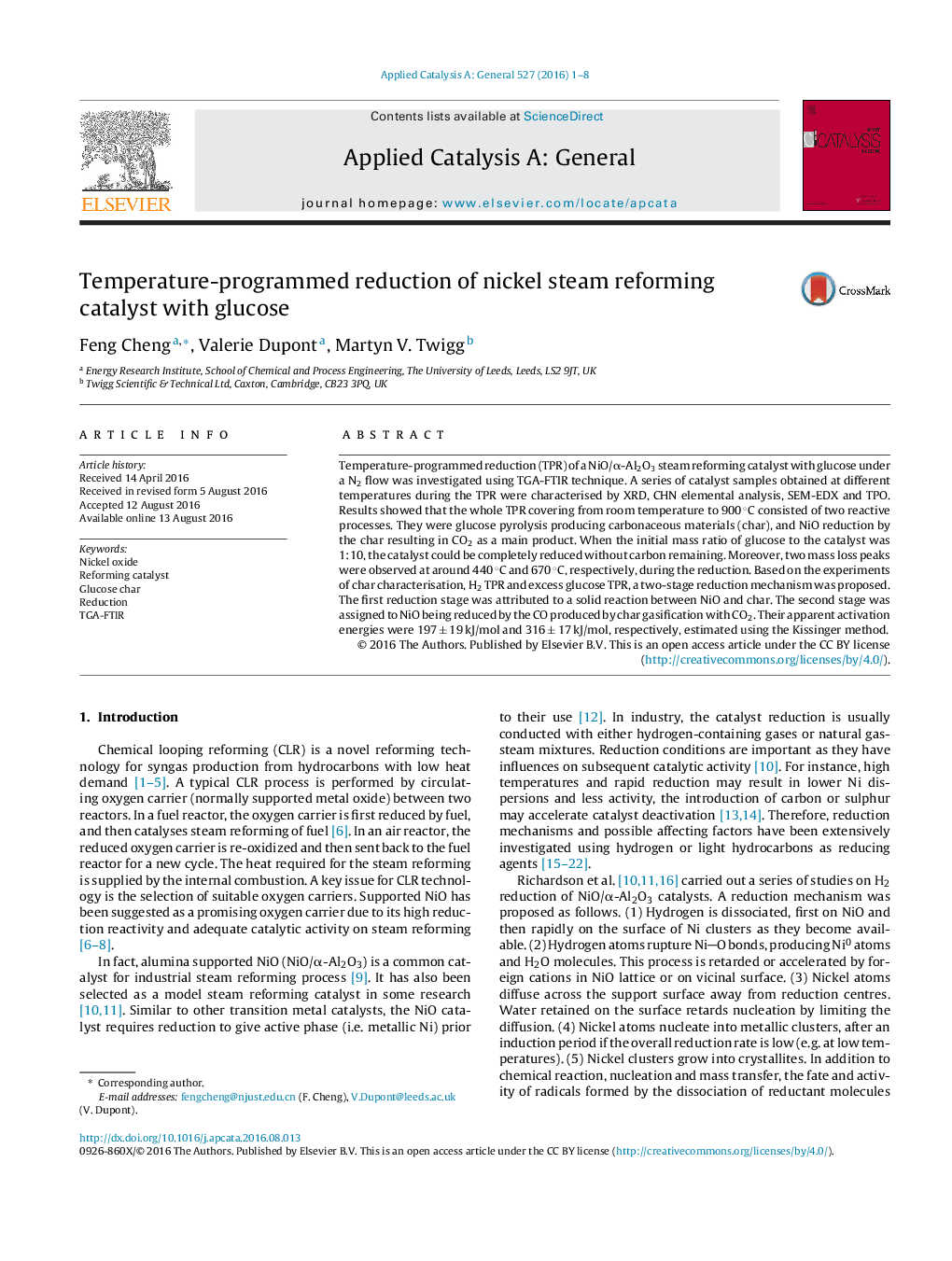| Article ID | Journal | Published Year | Pages | File Type |
|---|---|---|---|---|
| 6453311 | Applied Catalysis A: General | 2016 | 8 Pages |
â¢The reactivity between a NiO catalyst and char from glucose pyrolysis under N2 was studied.â¢The NiO reduction started at 420 °C and underwent two stages during a TPR process.â¢A complete reduction without carbon remaining was achieved when the mass ratio of glucose to the catalyst was 1:10 under our experimental condition.â¢This work has a potential implication to exploiting biomass resources via chemical looping technology.
Temperature-programmed reduction (TPR) of a NiO/α-Al2O3 steam reforming catalyst with glucose under a N2 flow was investigated using TGA-FTIR technique. A series of catalyst samples obtained at different temperatures during the TPR were characterised by XRD, CHN elemental analysis, SEM-EDX and TPO. Results showed that the whole TPR covering from room temperature to 900 °C consisted of two reactive processes. They were glucose pyrolysis producing carbonaceous materials (char), and NiO reduction by the char resulting in CO2 as a main product. When the initial mass ratio of glucose to the catalyst was 1:10, the catalyst could be completely reduced without carbon remaining. Moreover, two mass loss peaks were observed at around 440 °C and 670 °C, respectively, during the reduction. Based on the experiments of char characterisation, H2 TPR and excess glucose TPR, a two-stage reduction mechanism was proposed. The first reduction stage was attributed to a solid reaction between NiO and char. The second stage was assigned to NiO being reduced by the CO produced by char gasification with CO2. Their apparent activation energies were 197 ± 19 kJ/mol and 316 ± 17 kJ/mol, respectively, estimated using the Kissinger method.
Graphical abstractDownload high-res image (57KB)Download full-size image
